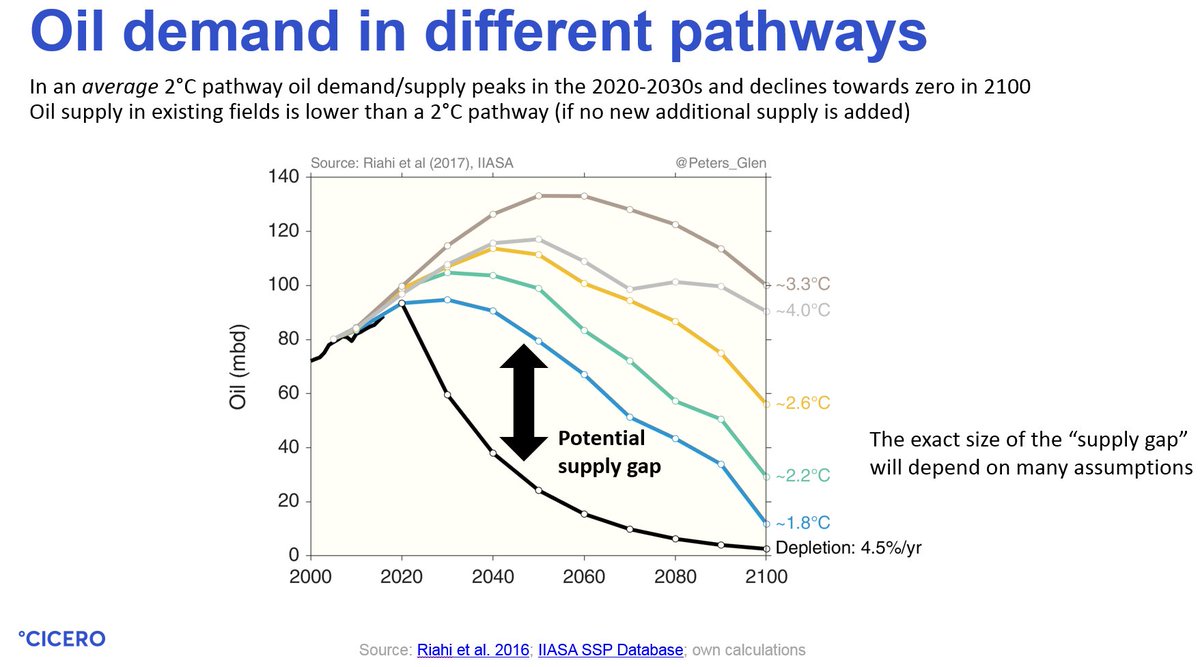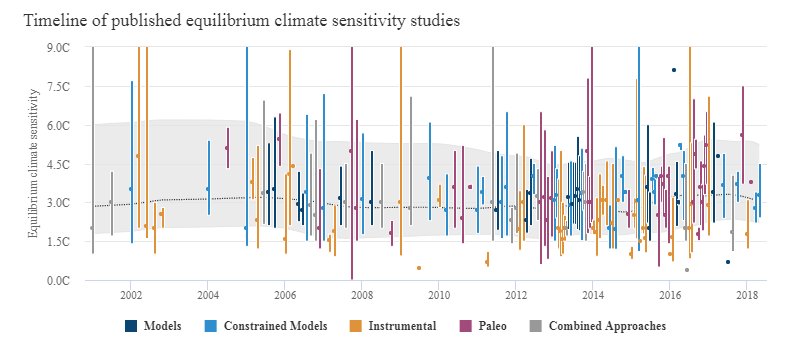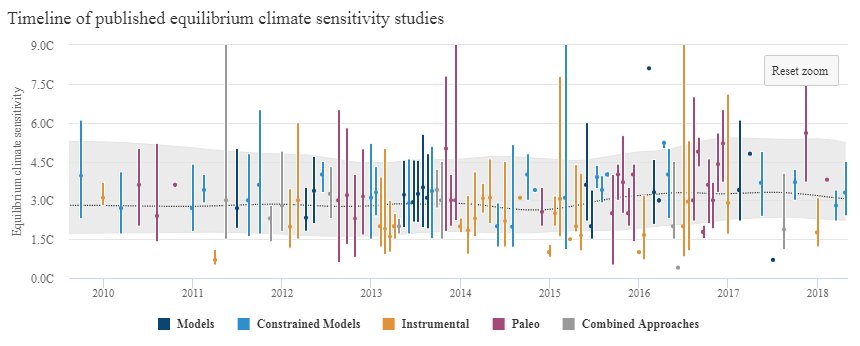A #HothouseEarth THREAD
The standard headline & interpretation: We are doomed, the Earth's climate will runaway to 4-5°C even if we slash emissions.
Well, that is not what the paper says (actually, it is a Perspective), & I don't see this framing as particularly helpful!
The standard headline & interpretation: We are doomed, the Earth's climate will runaway to 4-5°C even if we slash emissions.
Well, that is not what the paper says (actually, it is a Perspective), & I don't see this framing as particularly helpful!
The paper does not seem to define "Hothouse Earth", this seems to come from the press material? I don't see much on 4-5°C or 10-60m in the paper, if so, it is very indirect? 

The paper "explores" if we "could" instigate feedbacks, they "could" cascade, & they "could" lead to a hothouse earth (whatever that is). "We cannot exclude" this happening at 1.5-2°C. The closing paragraph says we should investigate these issues! pnas.org/content/early/… 
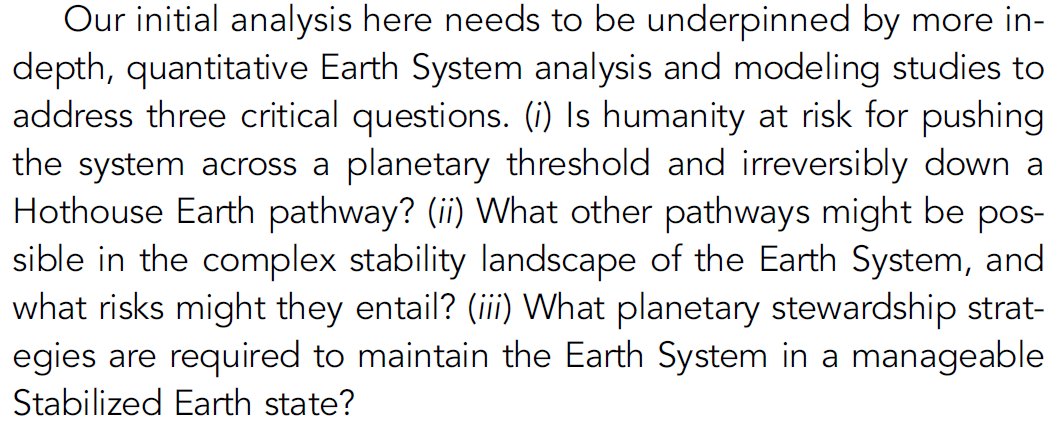
Nothing necessarily new here, except a new hashtag. @bobkopp gives a good summary
https://twitter.com/bobkopp/status/1026782504844517383
I like a good infographic, but worth noting that this is illustrative & we don't know the depth on the stability axis. We certainly don't know if the Earth is about to roll into the Hothouse. Maybe it is, we just don't know. 

There are a range of feedbacks that may be triggered at different temperatures, & may operate on different timescales (decades, centuries). They may interact. Even at 1.5-2°C "we cannot exclude the risk that a cascade of feedbacks [lead] irreversibly onto a “Hothouse Earth”". 

Carbon cycle feedbacks "could" lead to an addition 0.5°C if we follow a 2°C pathway. Could be bigger, could be smaller. Understanding these feedbacks is important yes, but the implication is not "hothouse earth imminent even with emission reductions" (as in some media) 

One unfortunate aspect was the "emission reductions are not enough", which seems mainly to come from the press material? The intention was "emissions reductions AND carbon dioxide removal needed". The first bullet on the "highlights" also misleads on this?
stockholmresilience.org/research/resea…
stockholmresilience.org/research/resea…
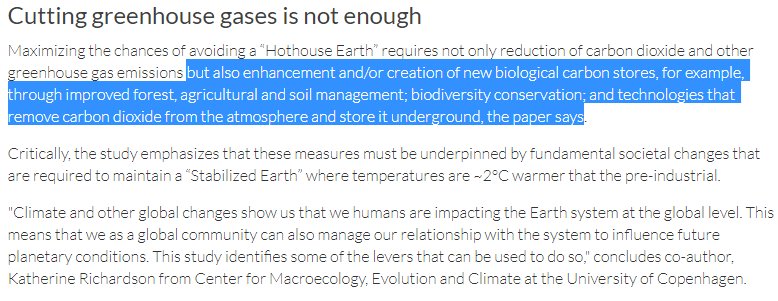
After reading the headlines & news stories, my initial reaction was "well, we should give up & focus on adaptation". Was that intended? Scientists should be straight shooters & say the way it is, but after reading the Perspective & the media, they don't really seem connected...
All I can ask, is for people to go & read the paper. It is currently freely accessible pnas.org/content/early/….
• • •
Missing some Tweet in this thread? You can try to
force a refresh





